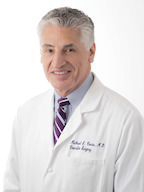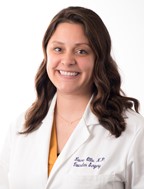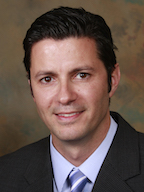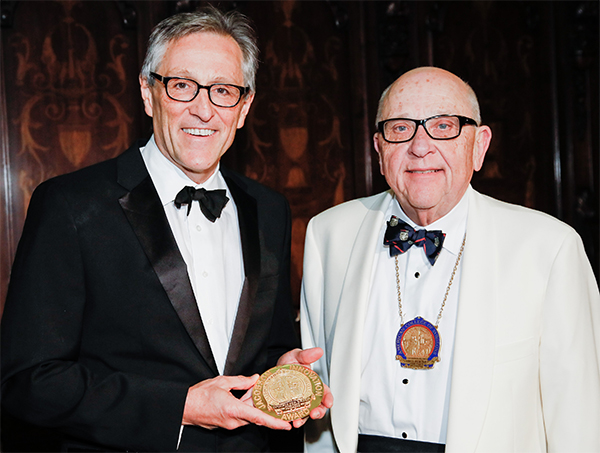Endovascular Aneurysm Repair
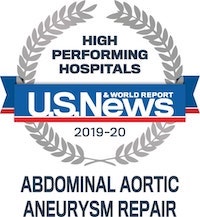 An aortic aneurysm is a bulging, dilation or ballooning in the wall of a blood vessel, usually an artery, that is due to weakness or degeneration that develops in a portion of the artery wall. Just like a balloon, the aneurysm enlarges, stretching the walls of the artery thinner which compromises the artery wall's ability to stretch any further. At this point, an aneurysm is at risk of rupturing and causing potentially fatal bleeding, just as a balloon will pop when blown up too much.
An aortic aneurysm is a bulging, dilation or ballooning in the wall of a blood vessel, usually an artery, that is due to weakness or degeneration that develops in a portion of the artery wall. Just like a balloon, the aneurysm enlarges, stretching the walls of the artery thinner which compromises the artery wall's ability to stretch any further. At this point, an aneurysm is at risk of rupturing and causing potentially fatal bleeding, just as a balloon will pop when blown up too much.
UCSF has a world-renowned program in endovascular surgery, one of the largest and oldest in existence. Vascular surgeons at UCSF have extensive experience in performing technically challenging surgeries for complex aortic aneurysms, such as those involving arteries running to the kidneys and intestines, and have pioneered many endovascular procedures for treating aneurysms in use today.
UCSF Medical Center earned a “high performance” rating – the highest rating possible – for abdominal aortic aneurysm repair in the U.S. News & World Report 2018-2019 Best Hospitals survey, which evaluated data from more than 4,500 hospitals nationwide.
Abdominal Endovascular Aneurysm Repair (EVAR)
The best method to repair an aneurysm depends upon several factors, including the location and shape of the aneurysm as well as the physical condition of the patient. Endovascular grafting is a minimally invasive method to treat an aortic aneurysm. Instead of an open aneurysm repair in which your chest and abdomen are surgically opened, your surgeon may consider a procedure called an endovascular aneurysm repair (EVAR).
Abdominal aortic aneurysm repair is a procedure used to treat an aneurysm (abnormal enlargement) of the abdominal aorta. Repair of an abdominal aortic aneurysm may be performed surgically through an open incision or in a minimally-invasive procedure called endovascular aneurysm repair (EVAR). In the EVAR procedure, a stent graft (a fabric tube supported by metal wire stents that reinforces the weak spot in the aorta) is inserted into the aneurysm through small incisions in the groin. Endovascular repair of aneurysms does not require a large incision and has a substantially shorter recovery than the conventional open surgical approach. However, not all aneurysms are suitable for endovascular repair.
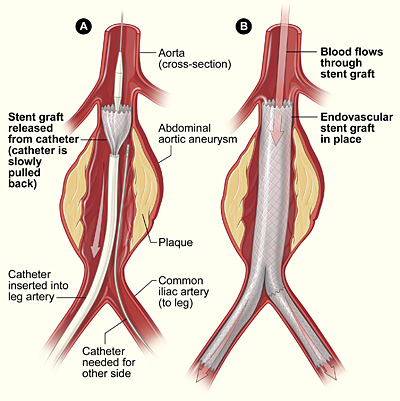 The surgeon first inserts a catheter into an artery in the groin (upper thigh) and threads it to the aneurysm. Then, using an x-ray to see the artery, the surgeon threads the graft (also called a stent graft) into the aorta to the aneurysm. The graft is then expanded inside the aorta and fastened in place to form a stable channel for blood flow. The graft reinforces the weakened section of the aorta to prevent the aneurysm from rupturing.
The surgeon first inserts a catheter into an artery in the groin (upper thigh) and threads it to the aneurysm. Then, using an x-ray to see the artery, the surgeon threads the graft (also called a stent graft) into the aorta to the aneurysm. The graft is then expanded inside the aorta and fastened in place to form a stable channel for blood flow. The graft reinforces the weakened section of the aorta to prevent the aneurysm from rupturing.
Endovascular Aneurysm Repair
The illustration to the right shows the placement of an endovascular stent graft in an aortic aneurysm. In figure A, a catheter is inserted into an artery in the groin (upper thigh). The catheter is threaded to the abdominal aorta, and the stent graft is released from the catheter. In figure B, the stent graft allows blood to flow through the aneurysm.
Endovascular repair reduces recovery time to a few days and greatly reduces time in the hospital. However, surgeons can't repair all aortic aneurysms with this procedure. The location or size of the aneurysm may prevent a stent graft from being safely or reliably placed inside the aneurysm.
Branched Arch Aneurysm Repair
Aneurysms along the aortic arch are rare and are the most complex to treat, largely because the arterial branches that supply blood to the brain and upper extremities are attached along the aortic arch. A customized branched endograft has graft limbs that branch off of the main portion of the device to directly provide blood flow to the kidneys, liver, stomach, intestines, and the visceral arteries.
This device is not approved for widespread use in the United States. It can only be used under the support of an investigational device exemption from the FDA –this trial is referred to as the “TAAA trial”. The current phase of this study began in 2005, using an industry-made version of the multi-branched stent-graft to treat over 100 patients so far.
Thoracic Endovascular Aneurysm Repair (TEVAR)
Thoracic aortic aneurysms are those that occur along the aorta above the diaphragm, the partition between the chest and abdomen, including the ascending aorta, the aortic arch, and the descending thoracic aorta. A thoracic aortic aneurysm is a bulge in the aorta which can cause the aorta's diameter to balloon to several times its normal size. Such an aneurysm may rupture, leading to extensive internal bleeding that is frequently fatal. TEVAR was initially developed to treat patients who were considered to not be surgical candidates but is now considered a suitable alternative to open surgery in most cases.
When treatment becomes necessary for a TAA, medical management is often the first choice - including reducing blood pressure, quitting smoking and lowering cholesterol in the patient's diet. However, medical management is not considered a "fix" for TAA - it just reduces the stresses on the aneurysm.
Vascular surgeons at UCSF have been pioneers in the field of endovascular aneurysm repair for the abdominal and thoracic aorta. Our principal investigators are also leading clinical trials seeking to develop state-of-the-art endovascular devices to advance the treatment of aortic aneurysms.
